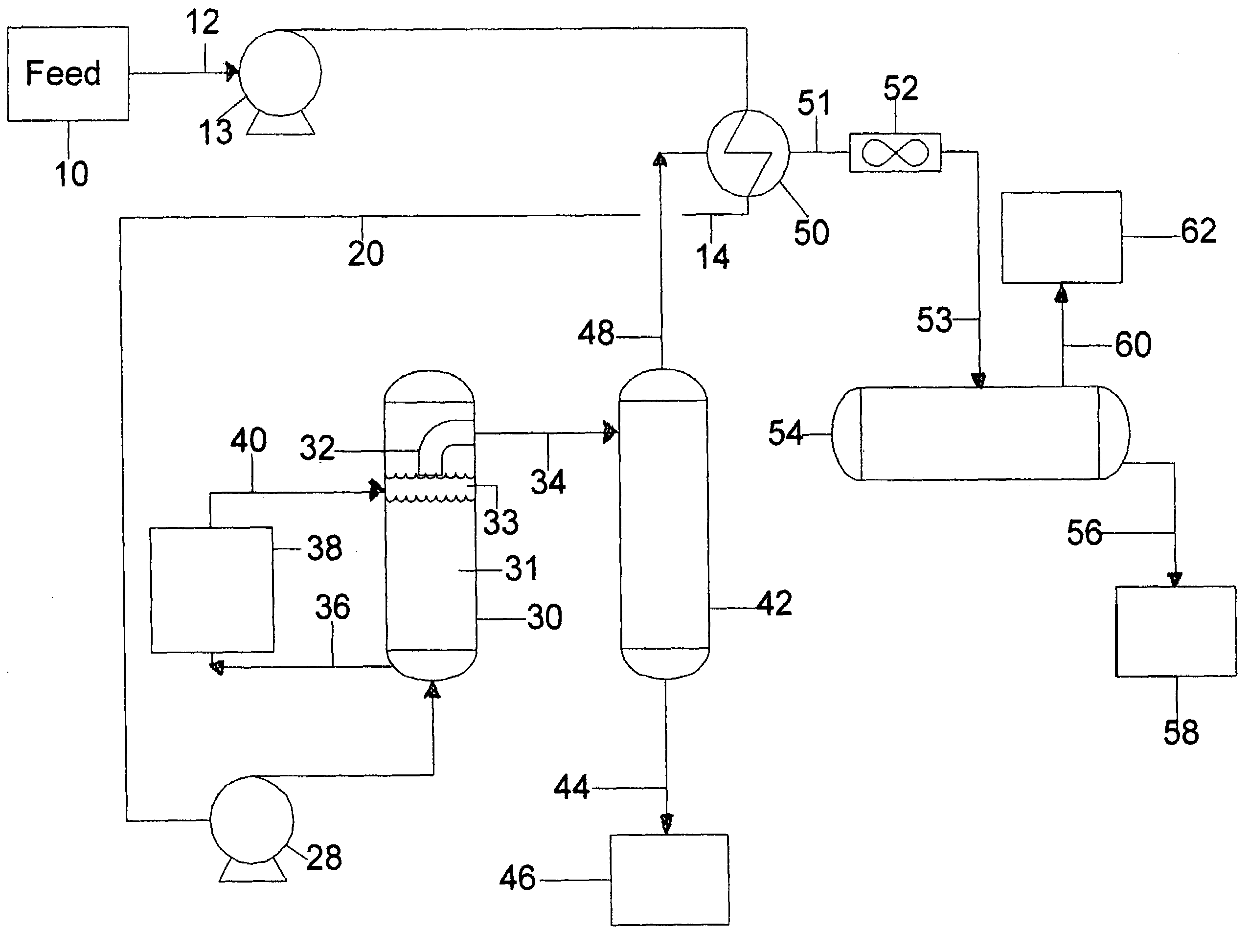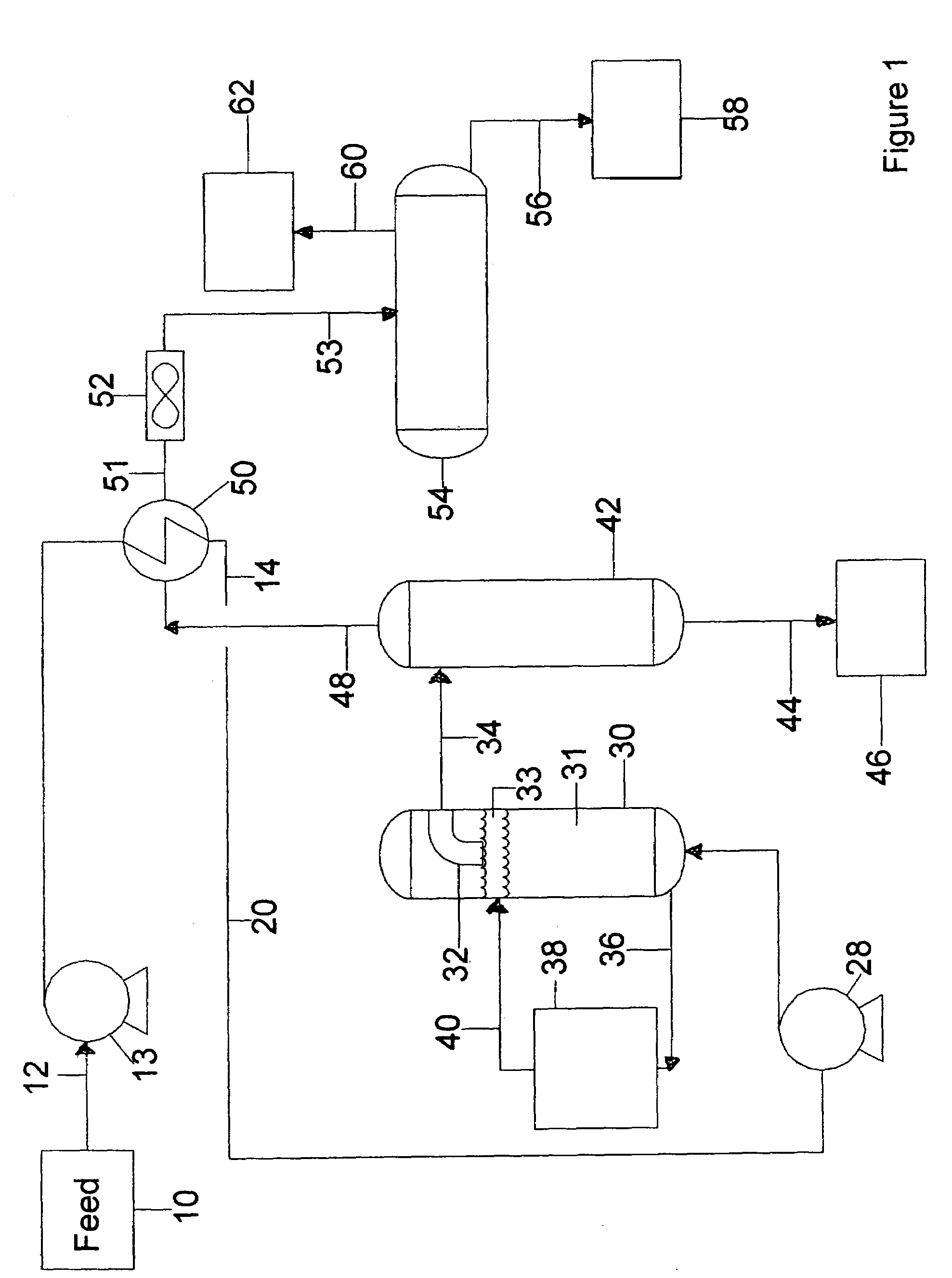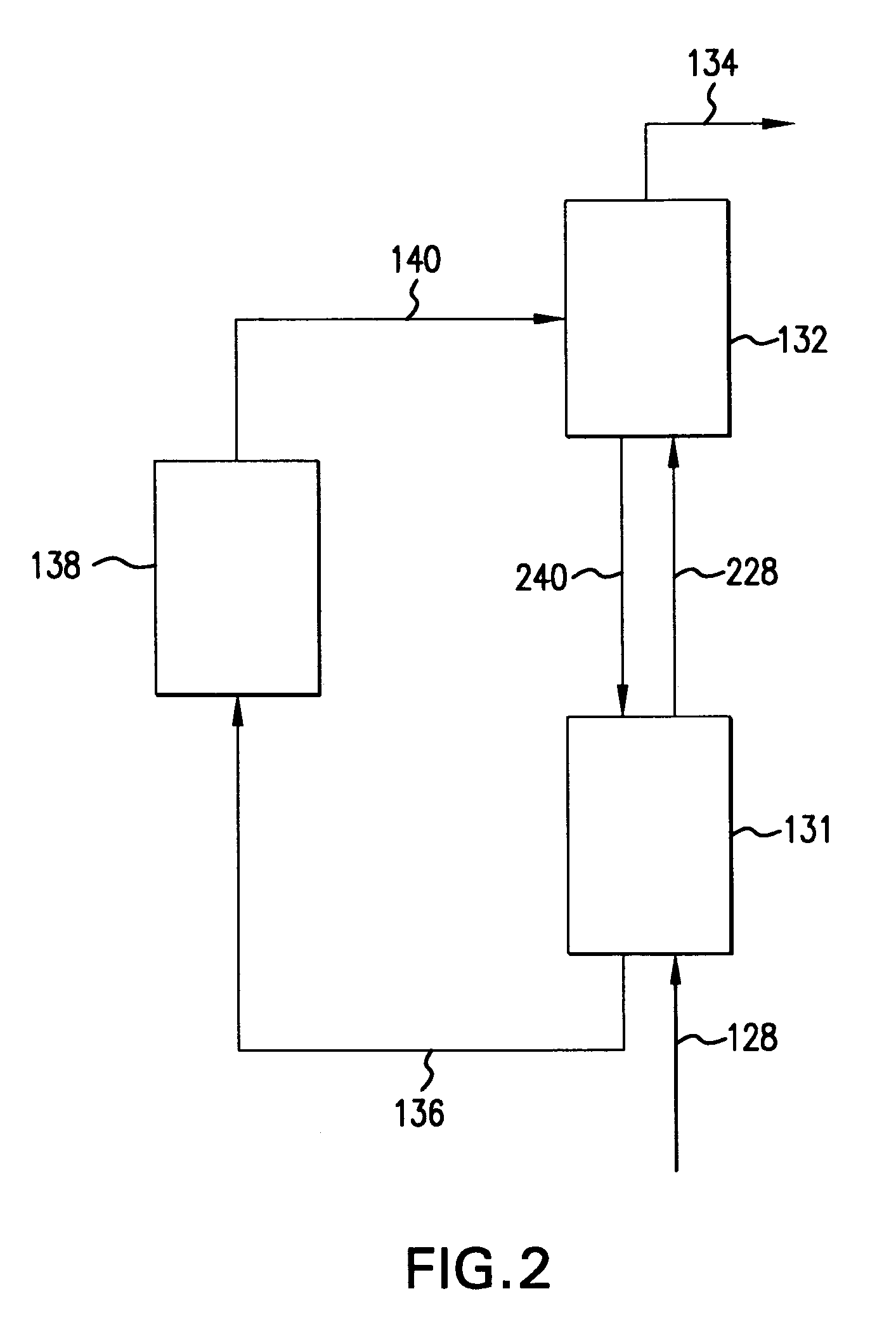Pitch fractionation and high softening point pitch
a technology of fractionation and pitch, applied in the field of pitch fractionation, can solve the problems of low softening point, high difficulty, and too soft pitch, and achieve the effect of reducing the content of diluents
- Summary
- Abstract
- Description
- Claims
- Application Information
AI Technical Summary
Benefits of technology
Problems solved by technology
Method used
Image
Examples
Embodiment Construction
[0042]In FIG. 1, a feedstock, e.g., a crude pitch to be fractionated, flows from a feed storage system, 10, through line 12 to the feed pump 13 to heat exchanger 50 to produce a preheated pitch feed. Preheated feed is charged via lines 14 and 20 through optional pump 28 into direct thermal exchange heating zone 30. Sometimes the term DTX will be referred to as this zone or this approach, using molten metal for Direct Thermal eXchange (DTX) of crude pitch. Any heat transfer fluid that is immiscible with, and preferably much denser than, crude pitch feed may be used, but molten metal is ideal. In the embodiment shown, molten metal circulates from the bottom to the top of contactor vessel 30. DTX fluid is removed from the DTX heating zone 30 by line 36, heated in heater 38 to produce heated molten metal which is discharged via line 40 to heating zone 30. Heater 38 may use electrical resistance elements, a fired heater, superheated steam or the like as a heat source. Although a separate...
PUM
 Login to View More
Login to View More Abstract
Description
Claims
Application Information
 Login to View More
Login to View More - R&D
- Intellectual Property
- Life Sciences
- Materials
- Tech Scout
- Unparalleled Data Quality
- Higher Quality Content
- 60% Fewer Hallucinations
Browse by: Latest US Patents, China's latest patents, Technical Efficacy Thesaurus, Application Domain, Technology Topic, Popular Technical Reports.
© 2025 PatSnap. All rights reserved.Legal|Privacy policy|Modern Slavery Act Transparency Statement|Sitemap|About US| Contact US: help@patsnap.com



